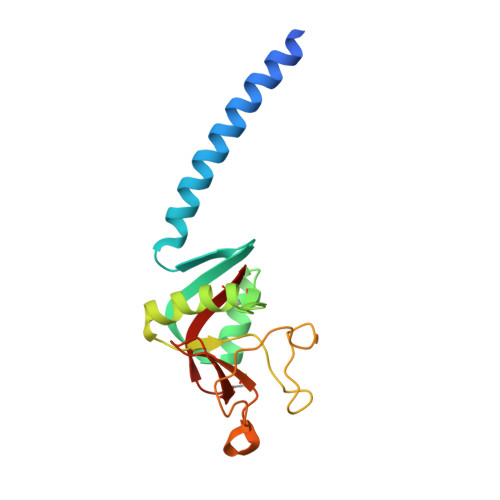Critical Role of Arg/Lys343 in the Species-Dependent Recognition of Phosphatidylinositol by Pulmonary Surfactant Protein D.
Crouch, E., McDonald, B., Smith, K., Roberts, M., Mealy, T., Seaton, B., Head, J.(2007) Biochemistry 46: 5160-5169
- PubMed: 17417879
- DOI: https://doi.org/10.1021/bi700037x
- Primary Citation of Related Structures:
2ORJ, 2ORK, 2OS9 - PubMed Abstract:
Surfactant protein D (SP-D) plays important roles in lung host defense. However, it can also recognize specific host molecules and contributes to surfactant homeostasis. The major known surfactant-associated ligand is phosphatidylinositol (PI). Trimeric neck-carbohydrate recognition domains (NCRDs) of rat and human SP-D exhibited dose-dependent, calcium-dependent, and inositol-sensitive binding to solid-phase PI and to multilamellar PI liposomes. However, the rat protein exhibited a >5-fold higher affinity for solid-phase PI than the human NCRD. In addition, human dodecamers, but not full-length human trimers, efficiently coprecipitated with multilamellar PI liposomes in the presence of calcium. A human NCRD mutant resembling the rat and mouse proteins at position 343 (hR343K) showed much stronger binding to PI. A reciprocal rat mutant with arginine at the position of lysine 343 (rK343R) showed weak binding to PI, even weaker than that of the wild-type human protein. Crystal complexes of the human trimeric NCRD with myoinositol and inositol 1-phosphate showed binding of the equatorial OH groups of the cyclitol ring of the inositol to calcium at the carbohydrate binding site. Myoinositol binding occurred in two major orientations, while inositol 1-phosphate appeared primarily constrained to a single, different orientation. Our studies directly implicate the CRD in PI binding and reveal unexpected species differences in PI recognition that can be largely attributed to the side chain of residue 343. In addition, the studies indicate that oligomerization of trimeric subunits is an important determinant of recognition of PI by human SP-D.
Organizational Affiliation:
Department of Pathology and Immunology, Washington University School of Medicine, St. Louis, Missouri 63110, USA. [email protected]
















